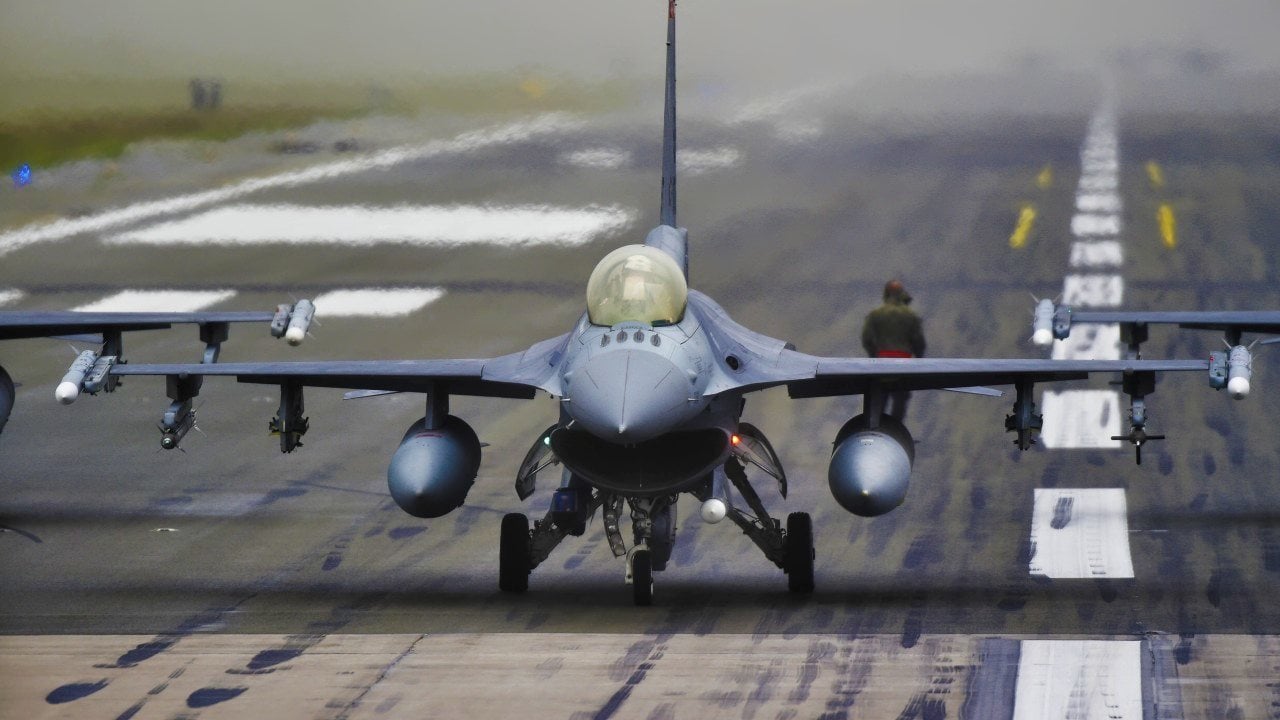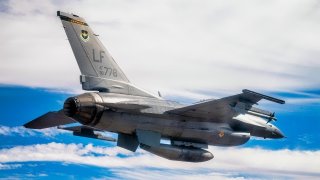Russia Won't be Happy: Ukrainian F-16s Received EW Upgrades From the U.S. Air Force
The F-16 Fighting Falcon, a widely adopted combat aircraft developed in the 1970s, continues to be upgraded for modern warfare. The 68th Electronic Warfare Squadron (EWS) recently collaborated with Danish and Norwegian counterparts to enhance the electronic warfare (EW) capabilities of F-16s donated to Ukraine.
Summary and What You Need to Know: The F-16 Fighting Falcon, a widely adopted combat aircraft developed in the 1970s, continues to be upgraded for modern warfare. The 68th Electronic Warfare Squadron (EWS) recently collaborated with Danish and Norwegian counterparts to enhance the electronic warfare (EW) capabilities of F-16s donated to Ukraine.
-These upgrades, aimed at countering evolving Russian threats, were rapidly implemented despite challenges with unfamiliar systems.
-The enhanced F-16s will provide crucial support to Ukrainian forces in achieving spectrum superiority.
-NATO allies have pledged to provide 79 F-16s to Kyiv, with the first already in combat operations against Russian missile and drone attacks.
Upgraded F-16s for Ukraine: Enhancing Air Superiority Against Russian Threats
The F-16 Fighting Falcon is the most widely adopted fixed-wing combat aircraft in service today, and although it was developed in the early 1970s and took its maiden flight more than five decades ago, it has been steadily improved and updated. Some of the latest enhancements were made available to the Fighting Falcons in service with the Ukrainian Air Force.
This week, the 68th Electronic Warfare Squadron announced that it had "collaborated with" its "Danish and Norwegian counterparts" by enabling electronic warfare (EW) capabilities in the F-16s donated by multiple NATO members to Kyiv.
"The 68th EWS is an Air Force center of Electronic Warfare excellence, focused on increasing the lethality and survivability of the U.S. and its strategic partners by developing, testing and delivering full-spectrum Electromagnetic Warfare support," the Wing explained in a statement. "Both Ukraine and Russia?s militaries heavily rely on unfettered access to the electromagnetic spectrum to achieve commander objectives and both sides have continuously engaged in EW through techniques such as jamming and spoofing throughout the war to achieve spectrum superiority."
Both Russian and Ukrainian forces have attempted to jam the GPS guidance systems of the other side's platforms, looking to cripple the effectiveness of drones and missiles, Air & Space Forces magazine reported. Staying ahead of the other side has resulted "in a cat-and-mouse battle."
The aviation news outlet also noted that the F-16s recently seen in Ukraine appeared to have been outfitted with an electronic countermeasures pod.
Adding the EWS
The enhancements were meant to help ensure the Fighting Falcons being provided to Ukraine would be effective against "evolving Russian threats in the spectrum," the 68th EWS noted while it further said it was taking the "challenge head-on."
Upgrading military aircraft isn't exactly a "plug-and-play" exercise, and it was further complicated by the fact that the F-16s were a model not operated by the United States military, and thus not in the U.S. "inventory." This was coupled with the "timeline" for the delivery of the aircraft to Kyiv.
"Most reprogramming centers would have said 'no way' when approaching this challenge; it's uncharted policy," said the 68th EWS chief engineer charged with overseeing the project. "We looked at each other and we said, 'If not us, then who? We're the best people to do this.'"
To accomplish the mission, the 6th AWS brought together several experienced experts as well as "bright, young engineers" who offered a unique approach to the reprogramming challenge. That included understanding the vastly unfamiliar EW systems in the donated F-16s, and then a focus on what would be required to reprogram those systems.
That included relying on data provided by the Danish and Norwegian Air Forces, which provided a starting point. This also required sending the team members overseas to an undisclosed "partner-nation lab" where the work was conducted.
"This is not our standard operating procedure," explained the 68th EWS director. "The fact that the team was able to figure out the system in two weeks, go in country with a partner to develop a best-ever mission data file is unheard of and is thanks to the talent here in the squadron and the wing."
Now that the systems have been upgraded, the Ukrainian Air Force will supply feedback on how the enhancements perform. This will be unique as the unit noted that such feedback from foreign military sales (FMS) aircraft are usually derived from training exercises, not actual combat. The information gathered will help the U.S. and its allies further enhance its EW capabilities.

"When you?re talking about a near-peer conflict, you need all of your coalition partners to operate with the same playbook so you can achieve spectrum dominance," said the 68th EWS director. "One F-16 with a reprogrammed pod won't achieve air dominance alone, but it may give you a pocket of air superiority for a moment's time to achieve an objective that has strategic importance and impact."
NATO members Belgium, Denmark, the Netherlands, and Norway have pledged to provide around seventy-nine F-16 Fighting Falcons to Kyiv, and the first of those aircraft arrived earlier this month. The Fighting Falcons saw their first use in combat aiding in the efforts to counter a Russian missile and drone strike at Ukraine's civilian infrastructure earlier this week.
Author Experience and Expertise: Peter Suciu
Peter Suciu is a Michigan-based writer. He has contributed to more than four dozen magazines, newspapers, and websites with over 3,200 published pieces over a twenty-year career in journalism. He regularly writes about military hardware, firearms history, cybersecurity, politics, and international affairs. Peter is also a Contributing Writer for Forbes and Clearance Jobs. You can follow him on Twitter: @PeterSuciu. You can email the author: [email protected].
Image Credit: Creative Commons.


